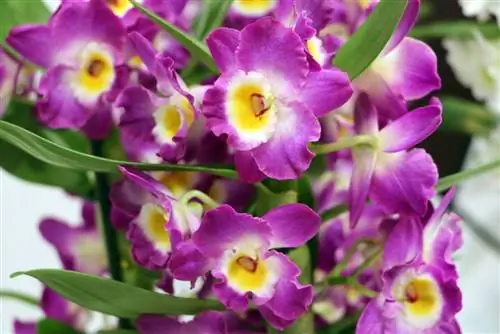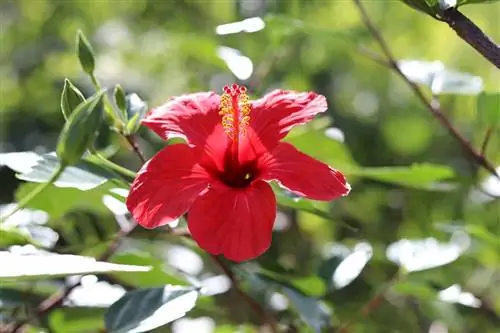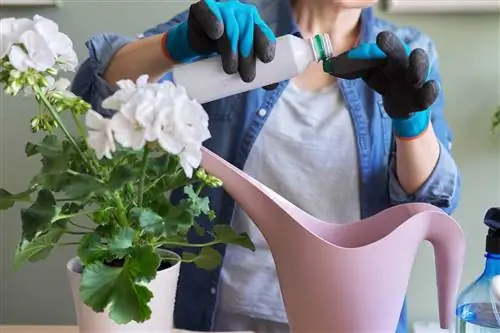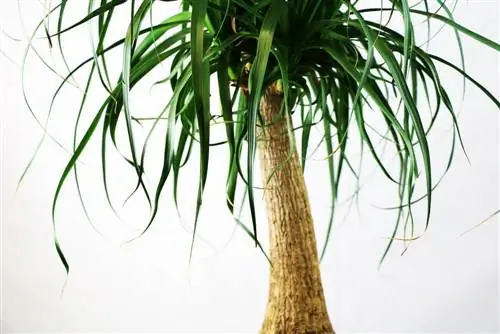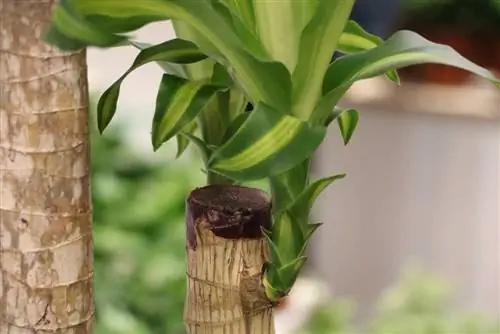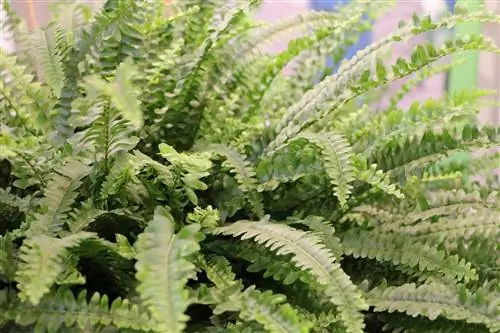- Author admin [email protected].
- Public 2023-12-17 03:39.
- Last modified 2025-06-01 06:48.
Green plants for bedrooms and other dark rooms are not difficult to characterize or select. Houseplants need little more than air and love - and light. This is precisely what is only present in ridiculous traces in bedrooms and other dark rooms by the standards of a plant, only the most robust shade plants in our world have a chance here, and that's what we're talking about:
Which green plants for which room?
In our houses and apartments there are many rooms that green plants find dark, usually with other typical characteristics that influence the choice of plants:
The best green plants for the bedroom
The bedroom is usually kept pretty cool, especially in winter. There isn't much light either, but good air is definitely desired, so there can and should be a place for a few of the powerful air purifying plants among the green plants that can survive in a moderately warm environment.
These are some of the plants from the list of “unbeatable air purifiers” presented below, the ferns, ivy and money plant, spider plant, rubber tree, bulbil and scabbard leaf, for example. Depending on the temperature in your bedroom, you can cultivate other plants from the list there; they all get by with very little light.
If the bedroom is kept really cool, it could also provide a good wintering quarter for a wide variety of potted plants from the balcony and terrace, depending on the species, possibly with an LED plant lamp above it.
The best green plants for the living room
In our living rooms, at least in winter, it's not exactly bright for a green plant, or in Germany it's dark in winter anyway - summer, outside, sun: around 100,000 lux, winter, outside, overcast: around 3,500 Lux, and the average living room lighting only manages 50 lux. With these ratios in mind, no one is surprised that many green plants are desperately sending out horny shoots seeking light.
In the bedroom we use up the air simply by being physically present; in the living room we are usually physically present for a comparatively shorter period of time, but in return we pollute the air quite heavily. If there is still smoking, then here, here the fireplace and the candles burn and in Advent the smokers burn, this is where the family and the guests gather. There may be a vent over the fireplace, but there isn't an extractor hood like in the kitchen, and the windows are unlikely to be opened when everyone is sitting comfortably together.
The temperatures in the living room are friendly, all the green plants in the favorites list below can provide better air here.
Green plants for kitchen and bathroom
(Actually used) kitchens and bathrooms are sometimes windowless and therefore extremely dark for plants, but nice and warm and moist.
All green plants that grow close to the ground among other plants, in the jungle or in subtropical forests, feel at home here. There are a few such plants on the list of air purifier plants. There are also several herbs that like to be surrounded by high humidity; various sages and verbena also have a scent.
By the way, there are good reasons why there are more green plants than flowering houseplants in bedrooms and other dark rooms. Green plants are really important for our living environment:
The green plant and the flowering houseplant
In our language, the term “green plant” does not simply (rather meaninglessly) refer to any green plant, but rather a houseplant, a plant that is cultivated by people all year round in their living space for ornamental purposes, among other things.
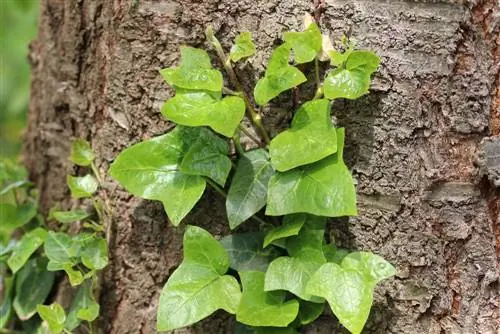
In addition to the green plants, there are also flowering plants in the room, which even began the history of houseplants in our part of the world: the first potted plants were placed in the house as early as the Middle Ages, flowering native plants from the garden in front of the front door, irises and lilies, lilies of the valley, violets and roses. But these weren't real houseplants, they were only put in the house while they were blooming to cover up the stench that was omnipresent in the Middle Ages.
The first real houseplants were brought into living rooms at the end of the 17th century, and in the 18th. In the 19th century, plants became fashionable in the home, especially in courtly surroundings, and plant breeding developed. Court fashion was copied in private households from the dawn of the bourgeois era towards the end of the 18th century, flower tables were an indispensable adornment of the salons in the Biedermeier period, and nature beautified living spaces.
With the installation of larger windows in living spaces (as a result of new glass manufacturing processes), more and more houseplants came into the rooms; at the end of the 19th century there was already an impressive range. Begonias and cinerarias, clivias, cyclamens and flamingo flowers were arranged into blooming paintings in the soon-to-be-opened flower window (with extra space for plants between double glazing).
In addition to the culture of a “blooming plant show”, the houseplant also moved into the depths of the room. In the course of historicism, the house plants of antiquity were rediscovered; Egyptians, Greeks and Romans had already cultivated laurel trees and other greenery in earthenware containers. As part of the first official contacts to Asia, envoys from Japan brought the first bonsais and from China reports and examples about the 2,500-year history of Chinese pot plant culture. Decorative foliage plants such as arched hemp, ivy, ferns, spider plants, rubber trees, ornamental asparagus and indoor firs now joined the houseplants, and the green plants for indoor cultivation were born.
The value of green plants for living space
It is precisely with this culture of green plants that the purely decorative function of the houseplant was returned to the original function that the plant had in the house in the Middle Ages: improving the air in the living room in the 19th and 20th centuries. Century with more knowledge about photosynthesis of plants and the value of air renewal in living spaces no longer as a short-term flower to cover up the smell, but as a green plant to constantly influence the air quality in the room.
The evergreen green plants moved into every room, carrying out photosynthesis all year round and thus ensuring good air and a good indoor climate all year round. Today we know even better how efficiently green plants filter the air in the home as part of their photosynthesis:
They bind pollutants from the air such as benzene, formaldehyde, trichloroethene, xylene, toluene and ammonia. A brief overview of these substances could significantly increase the motivation to buy green plants for the bedroom:
Benzene
Benzene, an aromatic hydrocarbon, is a component of many petroleum products and enters homes through road traffic emissions (it is contained in gasoline), tobacco smoke and open fireplaces. Elevated levels can increase the risk of various cancers.
Formaldehyde
Formaldehyde is still one of the most important organic raw materials in the chemical industry today, acutely toxic and has been subject to EC regulation since January 1st. In April 2015 it was legally classified as “probably carcinogenic in humans”. In the past, formaldehyde entered the indoor air through outgassing from materials containing formaldehyde (including wood materials, floor coverings, furniture, textiles). Today, the cleanup of buildings contaminated with formaldehyde (older prefabricated wooden houses) is an issue, but limits are repeatedly exceeded (Ökotest 2008 in children's beds)..
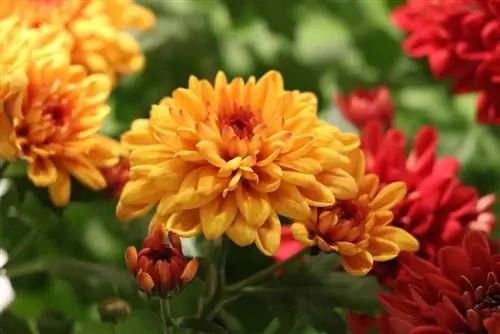
In addition, formaldehyde is emitted in all sorts of incomplete combustion processes, in combustion engines of motor vehicles, in the production of plastic items, when smoking and in living spaces due to incorrect charging/incorrect operation of small domestic combustion systems.
Trichloroethene
Trichloroethene is classified as carcinogenic and germ cell mutagenic and should be labeled as “toxic”. Until recently, it was one of the most common cleaning, degreasing and extraction agents in the metal and glass industries, dry cleaning and textile processing. Today we have limit values, albeit with exceptions, and trichloroethene is still important as a solvent for bitumen in the bitumen and asph alt industries.
Xylene
Xylene, an aromatic hydrocarbon similar to benzene with harmful effects when absorbed through the skin and respiratory tract. Xylene emissions are mainly due to vehicle traffic.
Toluene
Toluene is similar to benzene in many properties and is contained, among other things, in gasoline. Toluene also often replaces benzene as a solvent, but is not much he althier: it causes nerve damage, kidney damage and perhaps liver damage, is toxic to reproduction and teratogenesis and more, see de.wikipedia.org/wiki/Toluene.
Ammonia
Ammonia is a cell toxin that primarily affects nerve and muscle cells and has chronic effects after prolonged exposure (bronchial asthma, cough, shortness of breath, chemical burns on the skin and stomach in an aqueous solution). It is the base material for our nitrogen fertilizers and all other industrially produced nitrogen-containing compounds (refrigerants, UF resins as adhesives for wood materials such as Formica, textile finishing agents and much more).
Green plants have an important meaning for people's living space, which is why it has long been examined in more detail which plant does what:
The green plant favorites for cleaning the air
Every plant provides oxygen, increases humidity and filters the indoor air a little, but NASA has scientifically studied which plants purify the air best. Actually, this "NASA Clean Air Study", published in 1989, was only intended to determine how the air in space stations can best be cleaned.
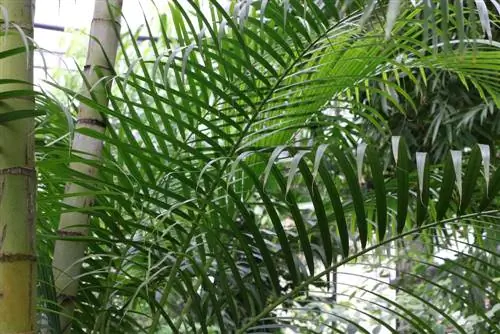
As is so often the case, this somewhat unusual space research also brought benefits for civil society: NASA has identified the plants that produce a particularly large amount of oxygen and have a particularly good air purification effect, here is the NASA list (including a few flowering ones Plants for dark rooms):
- Barberton gerbera, Gerbera jamesonii
- Mountain palm, Chamaedorea seifrizii
- Birch fig, Ficus benjamina
- Bow hemp, Sansevieria trifasciata Laurentii
- Boston sword fern, Nephrolepis ex altata Bostoniensis
- Dendrobium orchids, Dendrobium spp.
- Dieffenbachia, Dieffenbachia spp.
- Double-leaved tree friend, Philodendron bipinnatifidum
- Scented Dragon Tree, Dracaena fragrans Massangeana
- Ivy, Hedera helix
- Epipremnum aureum
- Flamingo flower, Anthurium andraeanum
- Large-leaved chrysanthemum, Chrysanthemum morifolium
- Bent dragon tree, Dracaena marginata=Reflexa
- Gold fruit palm, Dypsis lutescens
- Green Lily, Chlorophytum comosum
- Rubber tree, Ficus elastica
- Heart-leaved Philodendron, Philodendron cordatum
- No German name known, Homalomena wallisii
- Flounderthread, Aglaonema modestum
- Lily sword, Liriope spicata
- Phalaenopsis orchids, Phalaenopsis spp.
- Phoenix palm, Phoenix roebelenii
- Scabbard leaf 'Mauna Loa', Spathiphyllum 'Mauna Loa'
- Sword Fern 'Kimberly Queen', Nephrolepis obliterata 'Kimberly Queen'
- Spade leaf philodendron, Philodendron domesticum
- Hollow palm, Rhapis excelsa
All of these plants can cope with little light and thrive in an experimental space station, so certainly in the living room. They “can” do different amounts - ammonia, trichloroethene, benzene, xylene, toluene and formaldehyde can only be filtered out of the air in one go by the Spathiphyllum sheath leaf of the cultivar 'Mauna Loa' and the chrysanthemum Chrysanthemum morifolium.
But the other plants mentioned usually also “create” several pollutants; and since NASA recommends one plant per 9 square meters as a minimum, yes you can mix. The NASA list is certainly not exhaustive; among our approximately 40,000 varieties of ornamental plants, there are still many plants that thrive on very little light. These plants certainly also filter some pollutants from the air, but only the plants in the list above have been examined in detail.
Conclusion
There are many green plants for bedrooms and other dark rooms that can cope with the limited light available, for well-heated and rather cool rooms. Among them there are a whole range of plants (green plants + flowering houseplants) whose good air purification effect has been scientifically tested.

